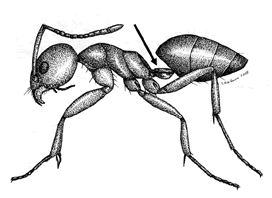 |
| Odorous house ant profile |
Illustration by J. MacGown, Mississippi State University |
Odorous House Ant
-
Scientific Name:
- Tapinoma sessile
-
Family:
- Formicidae (ants)
-
Order:
- Hymenoptera (ants, bees, wasps)
-
U.S. Distribution:
- Throughout the U.S.
This page has three tables, (1) Identification, (2) Look-alike Pests, and (3) Biology and Habits.
Identification
| Match the Shape and Size | Match the Color |
|---|---|
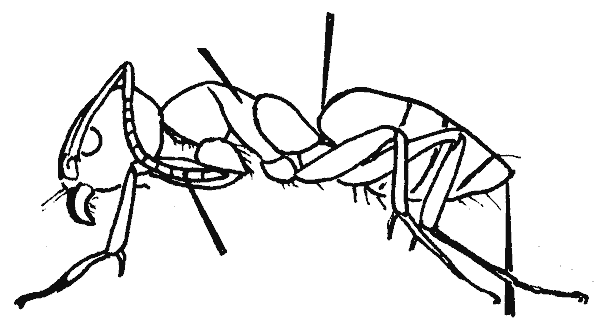 |
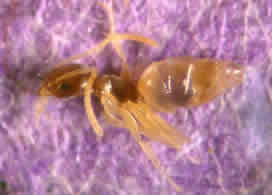 |
|
|
| Illustration © Pinto & Associates | Photo by Neil Reimer, Hawaii State Department of Agriculture |
Look-alike Pests
| Look-alike Pest | Differences |
|---|---|
Argentine ant (Linepithema humile) |
Node large, NOT hidden by abdomen; stale, musty odor when crushed |
Crazy ant (Paratrechina longicornis) |
Legs very long in relation to body; anal opening circular and surrounded by a circle of hairs (acidopore); no odor when crushed |
Biology and Habits
| Match the Food and Site | Match the Habits and Damage |
|---|---|
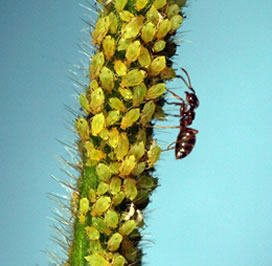 |
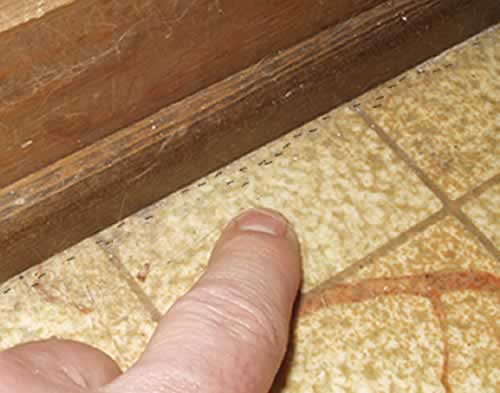 |
|
|
Photo by Marlin E. Rice |
Photo © Pinto & Associates |